LED fiber optic lights are often used to make a starry sky, a meteor shower, and other lighting effects, widely used in LED fiber optics decor lighting, such as fiber optic Christmas tree lighting, LED fiber optic pool lighting, LED fiber optic star ceiling lighting, fiber optic headliner lighting, fiber optic lights for car lighting, etc.
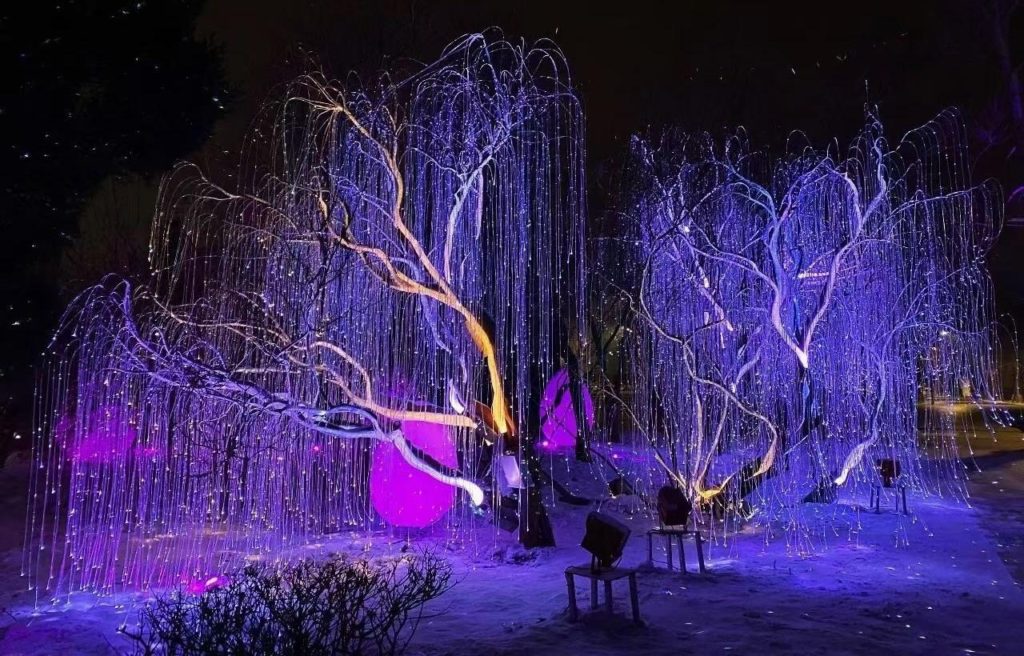
What is a LED fiber optic light?
LED lighting fiber optic cable looks like a long round cylinder, is slender, and has different diameters, used to transmit optical signals over long distances. An optical fiber cable consists of a core and an optical cladding. The function of the core is to transmit the LED light, and the cladding concentrates the transmission range of the LED lighting in the core. Optic fiber cable with thin cladding and large core can maximize light coupling during light transmission from the illuminator to the fiber optic cable.
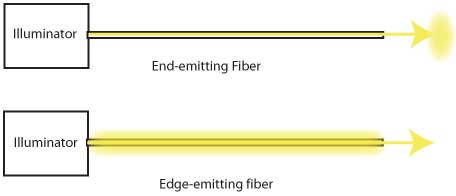
The optic fiber is inserted into the fixed ring of the illuminator, and the LED light is transmitted from the illuminator to the end of the fiber or illuminates the entire fiber.
Do fiber optics absorb light?
Optical fiber itself does not absorb light, it is just a medium for propagating light.
Do fiber optic lights get hot?
Fiber optics cable does not generate heat, so it is suitable for lighting in environments that are easily damaged by lighting heat, such as museums and art galleries.
What material is the LED optical fiber made of?
LED fiber optic cables are made of PMMA plastic, which is lightweight, soft, and more resistant to damage, and it is inexpensive and easy to install. However, plastic fiber optics lighting cable is not resistant to high temperatures, and fiber cable LED lighting installation is not recommended in harsh high-temperature environments.
How does a fiber optic LED light work?
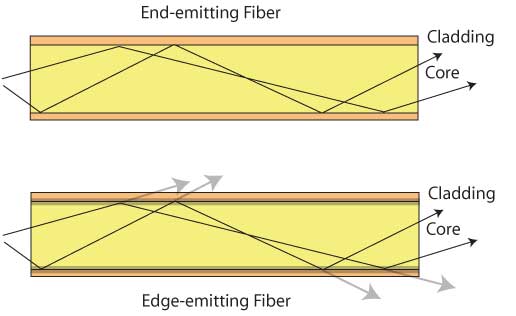
LED optical fiber light works on the principle that the LED light is constantly refracted in the optical cable.
An RF remote control LED fiber optic lighting kit includes an RF remote controlled illuminator and a number of fiber optics. The RF remote control changes the color of the fiber optic light source, that is, the illuminator, to change the color of the fiber optic display. The LED fiber optic lighting can also be controlled by Bluetooth fiber engine and WIFI fiber optic engine.
When installing the LED fiber optic cable lights, pay attention to the clean and tidy installation environment. If dust enters the end of the fiber, it will darken the light transmission.
What are the types of LED fiber optic cable?
- End-emitting fiber optic: After the LED light beam is transmitted to the end, it is illuminated at the end, and no light is emitted in the middle transmission distance.
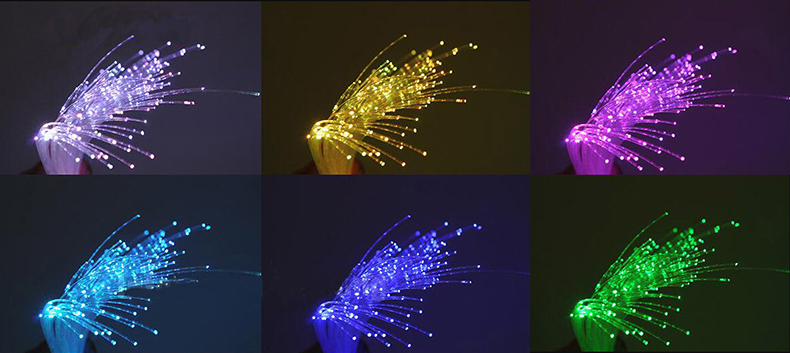
- Edge-emitting fiber optic: The LED light is transmitted from the beginning to the end, and the whole body emits light, forming a flexible beam of light.
- Side-emitting fiber optic: The circular fiber has a side, the circular fiber emits LED light, and the side does not emit light, which can be installed in narrow gaps for the fiber optic car interior lighting decoration.
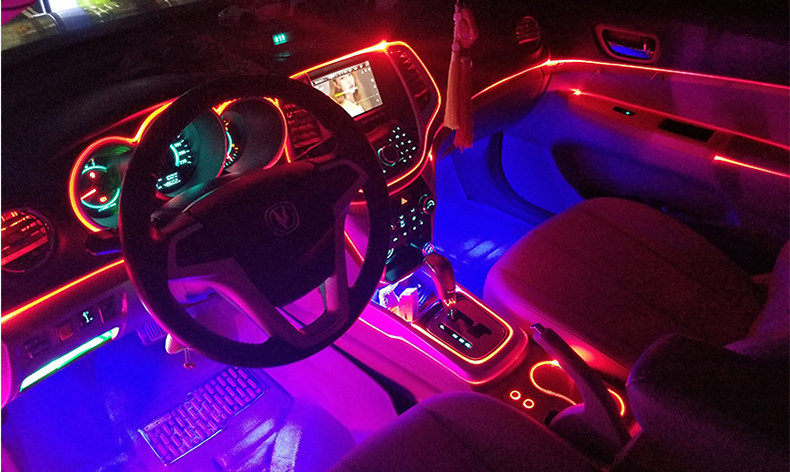
What color light does fiber optics use?
The light of the LED fiber optic lights comes from the lighting engine – illuminator, so whatever color light the illuminator emits, the fiber displays whatever color. We support RGB fiber optic engine, RGBW fiber optic engine, and DMX fiber optic engine, which can emit rich colors.
Why use LED fiber optic lights?
- LED fiber optics are strong, flexible, and unbreakable, making the led fiber optic lights much more durable than fragile LED light bulbs. And the LED fiber optic cable can be reused, saving investment.
- Fiber optic LED light is non-conductive and can be safely done for fiber optic pool lighting or fountain lighting underwater or lighting in electrically hazardous environments.
- Optical fiber LED lighting has no ultraviolet and infrared light, which can reduce damage to certain items such as cultural relics and textiles.
- LED fiber optic lighting is not subject to electromagnetic interference and can be used in special places with electromagnetic shielding requirements.
- Illuminators can have many different colors to suit your need. You can use LED fiber optic cables to create a starry sky, waterfall, or other lighting patterns.
- The fiber optic installation is simpler. The illuminator can be placed where it is easy to maintain, and easy to replace the light source.